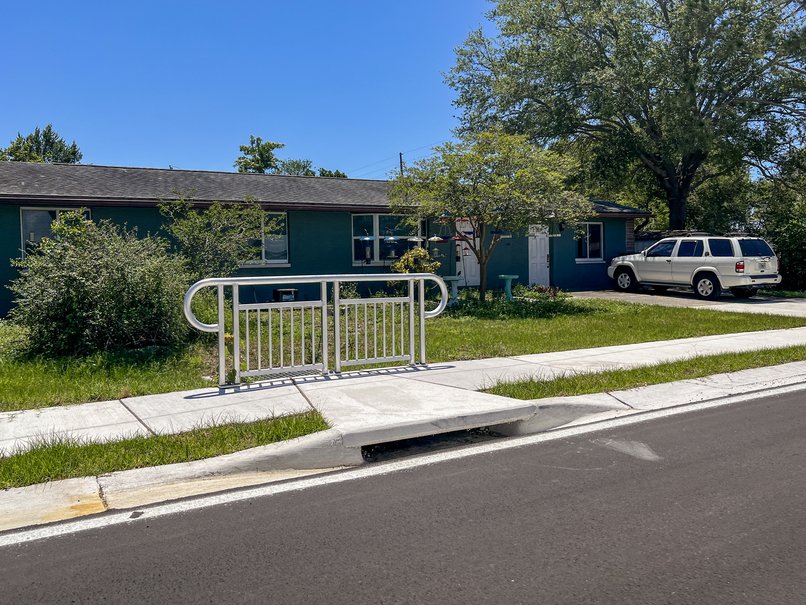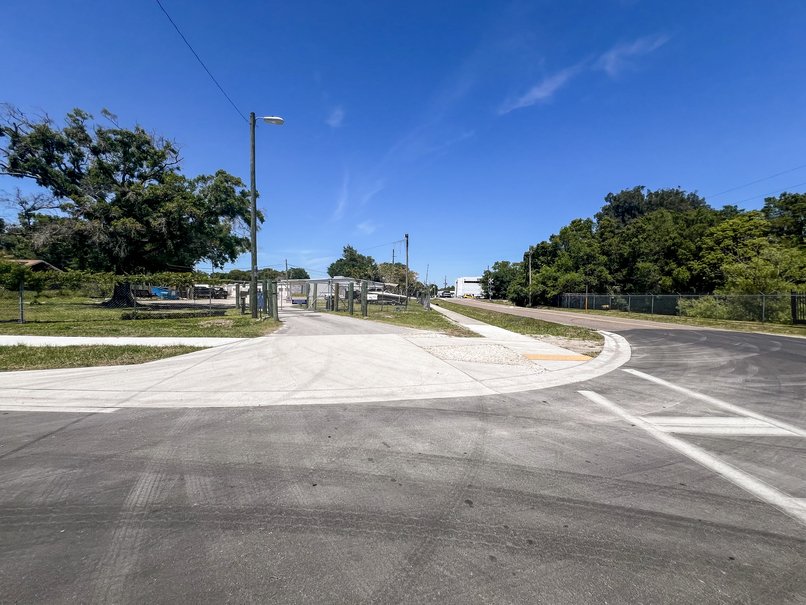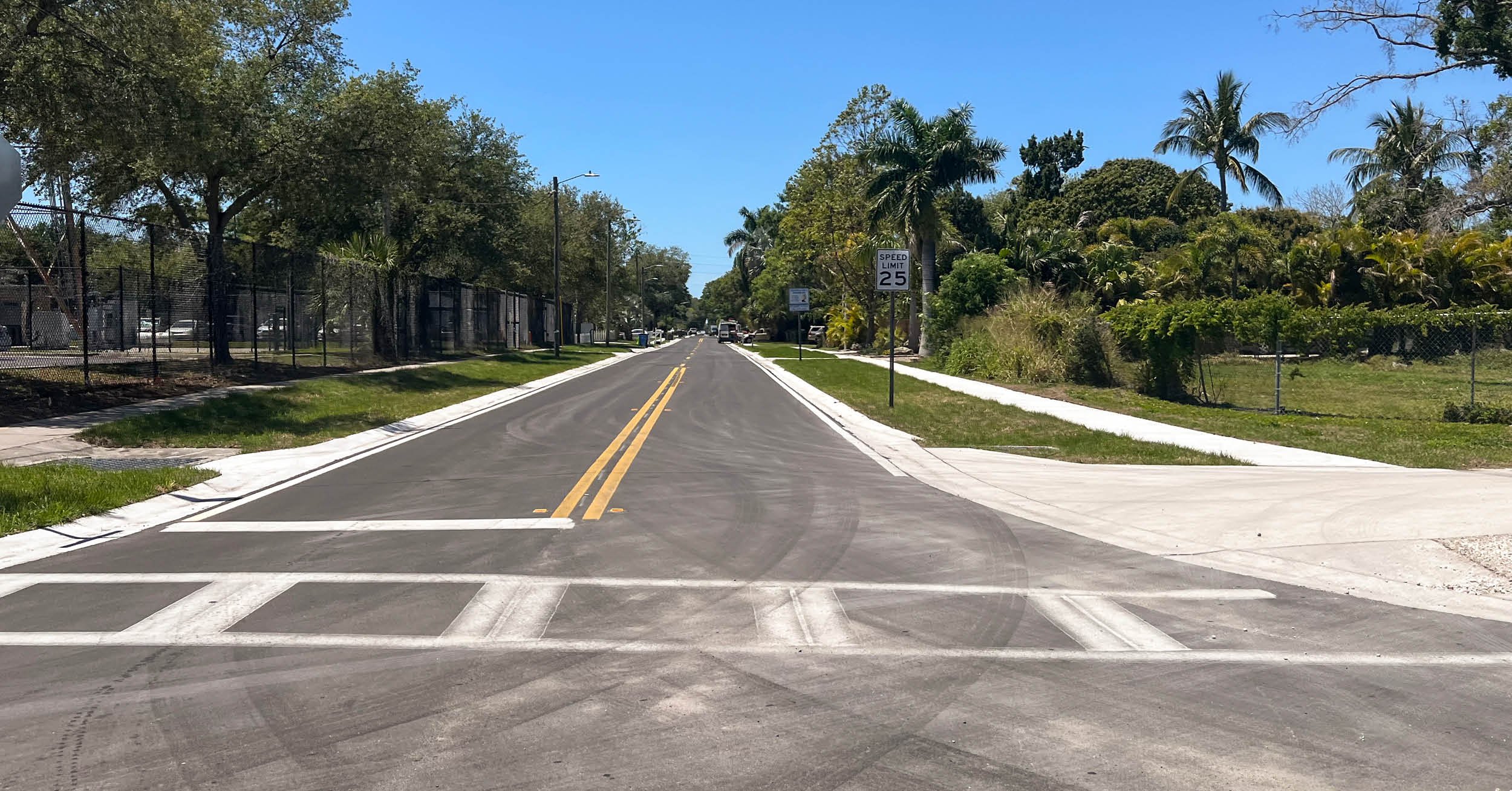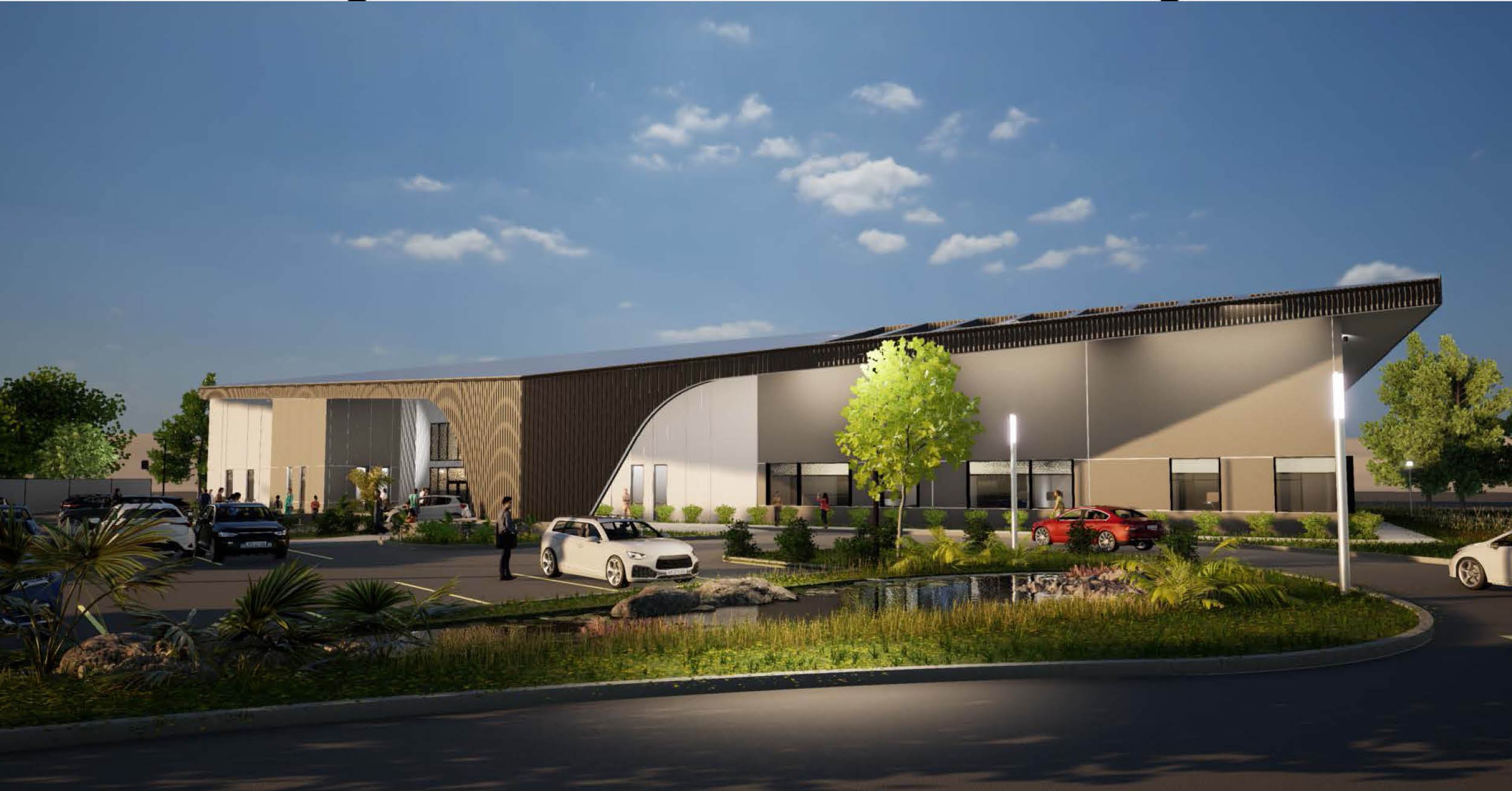The goal seemed simple. Convert a 2-lane rural roadway into a modern, urban corridor with curb and gutter, ADA-compliant sidewalks on both sides, and a closed drainage system. But as any engineer knows, the execution of such a vision typically involves a host of complexities, such as site constraints, aging infrastructure, tight project schedules, and the need to balance function with public impact.
Such was the case with the transformation between 46th Street N and 35th Street N in Pinellas County, Fla., as part of the 42nd Avenue North Roadway and Sidewalk Improvements project.
Turning Vision into Reality
As the prime consultant for this project, DRMP was responsible for redesigning and reconstructing approximately 1 mile of roadway into a safe, pedestrian-friendly urban corridor. In recognition of this work, DRMP was named Consultant of the Year in the Roads and Highways category, and the project itself received the Project of the Year award in the Transportation category from the American Public Works Association (APWA) West Coast Branch in Tampa.
This project was critical to providing safe routes for schoolchildren, improving stormwater management, and enhancing the neighborhood's aesthetic.

Construction funding came through the Florida Department of Transportation (FDOT) Local Agency Program (LAP), which meant we had to meet strict design and schedule requirements to secure funding and keep the project on schedule.
One of the biggest technical challenges was the flat roadway grade and constrained right-of-way. These conditions complicated drainage design, especially given the deep existing ditches we were filling in. Our design team used a combination of roadway reconstruction and concrete flumes to direct runoff effectively, which eliminated the need for long stretches of storm pipe, an approach that preserved space and stayed within right-of-way limits.
Design and Construction Challenges
The project presented several significant hurdles, but with smart planning and creative engineering, we overcame each challenge, including:
- FDOT LAP Schedule: Keeping the project design on schedule was key to securing construction funding from FDOT. This was achieved through proactive project management and close coordination with the Pinellas County project manager, ensuring the project stayed on schedule and within budget. A high level of quality control was also maintained to minimize plan changes and change orders during construction.
- Underground Utilities: We conducted Subsurface Utility Engineering (SUE) early on to resolve potential design conflicts and avoid impacting existing utilities.
- Shallow Groundwater Table: Crushed concrete base was used to effectively address the challenge of a high groundwater table.
- Floodplain Impacts: Instead of offsite mitigation, we incorporated small ponds within the project corridor to satisfy floodplain compensation requirements.
- Traffic Management: We needed continuous access to adjacent properties, so we implemented a single-lane, one-way detour – constructed one block at a time – to keep residents moving safely during construction.
Innovations and Lasting Value
Some of the most rewarding aspects of this project came from finding innovative solutions under less-than-ideal conditions. For example, we dealt with a shallow groundwater table and a problematic 8-inch vitrified clay pipe (VCP) sanitary line by integrating flumes into the roadway design, avoiding utility conflicts while maintaining effective drainage. We also coordinated with Duke Energy to improve corridor lighting, enhancing nighttime safety and visual appeal.

Value engineering played a key role throughout the project. Our use of crushed concrete allowed us to bypass traditional stabilization techniques, reducing both time and cost while maintaining structural integrity.
Safety, Community, and Environmental Stewardship
A big part of this project's success was our commitment to public outreach and safety. We collaborated with Pinellas County to keep residents informed in advance and throughout the project through mailers, public meetings, and website updates. This transparency built trust and led to strong community support.
Despite no major environmental concerns, we took care to preserve existing trees and enhance corridor aesthetics. Through these efforts, this corridor design turned an outdated, unsafe rural roadway into a connected, safe, and accessible urban corridor, improving quality of life.
As engineers, these are the kinds of projects that remind us why we do what we do, which is solving problems, improving lives, and leaving a lasting impact – one block at a time.
Pavan Paiavula, PE, serves as the Tampa Roadway Group Leader and a Project Manager for DRMP’s Transportation Market Sector.



















